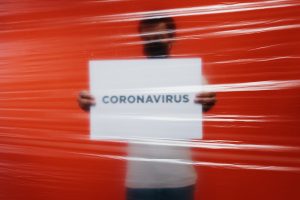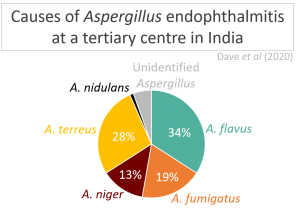Submitted by Aspergillus Administrator on 10 September 2010
Acute invasive aspergillosis is mainly a threat to patients who have a severely compromised immune system. By definition they are poor at fighting off infection and thus run a high risk of infection by all micro-organisms, including Aspergillus.
Once of the reasons why people become severely immunocompromised is when they are undergoing a stem cell transplant (HSCT) for the purpose of replacing their entire immune system. This is most often carried out as a treatment for leukaemia or myeloma, cancers of the immune system, and to treat other blood disorders. HSCT requires a donor to contribute the healthy immune cells and requires the complete removal of the recipient’s immune cells. This leads to a short period of a few days when the recipient has few immune cells while they wait for the donors cells to start working fully and it is at this time that the infection can occur. Once infected the fungus is difficult to eradicate, even for the rapidly returning immune cells. Some people seem to be more vulnerable to this infection that others and we don’t yet know why.
Dectin is known to be important in our immune response to Aspergillus infection, switching on the inflammatory response when exposed to Aspergillus fumigatus spores. Dectin, in common with other genes, has small variations in its DNA code (Single Nuclear Polymorphism – SNP) from person to person. Most SNP’s are rare and have small if any detectable effect but some do and there is one in Dectin (named the DECTIN1 Y238X polymorphism) that has a severe effect on the gene. Theoretically it might be that those people who carry this SNP are more susceptible to fungal infection. If we knew the answer to that question we would be able to screen HSCT recipients and donors for the SNP and reject the donor or take extra steps to reduce the chances of fungal infection if the recipient is effected.
This recent paper has carried out experiments to try to provide answers.
- It turns out that recipients who carry the Y238X polymorphism have twice the chance of developing invasive aspergillosis up to 36 months post transplant compared with those who do not.
- If the donated cells carry the Y238X polymorphism then the recipient has twice the chance of developing invasive aspergillosis
- If both the recipient and the donor carry the Y238X polymorphism the chances of developing invasive aspergillosis is even higher at 2.5 to 3x those who do not carry the faulty gene.
This result is fairly clear – HSCT patients need to know their Y238X SNP status and that of their donors.
There is an interesting extra experiment in this paper. The authors set up a mouse model system for HSCT using a mouse strain that lacked Dectin. Those mice that expressed Dectin showed a mild inflammatory response when Aspergillus fumigatus conidia where used to infect their lungs whereas mice that had no Dectin became highly inflamed.
The conclusions are that Dectin controls resistance to A. fumigatus infection and also controls inflammation in response to A. fumigatus conidia. The latter may well be linked to the former as inflammation is a two ended sword for our ability to fight off infections, including aspergillosis. Inflammation that follows shortly after an infection is part of the normal process of eradicating that infection, but inflammation can also prevent eradication of an infection if it becomes uncontrolled. Examples included Chronic Granulomatous Disorder where there is chronic inflammation but persistent infection at the same time (link).
This paper illustrates the progress being made to identify people vulnerable to infection by Aspergillus and provides hope that in this case at least we now know a little more about preventing aspergillosis.
News archives
-
Title
Date



